Social-Political Issues
 |
 |
 |
 |
 |
 |
 |
St. John Bosco on the Cause of the Revolution
Leafing through the writings of Saint John Bosco, I came across the following curious observation:
I will only say one thing about the bad boys, which may seem unlikely but which happens exactly the way I am going to describe it.
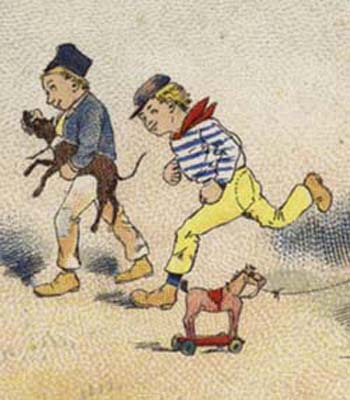 Let us say that among the 500 students of a school, there is one who lives a depraved life. One day, a new student arrives who is also vitiated. They both come from different regions and provinces, and even have different nationalities. They are in different classes and different places; they have never seen each other and do not know one another.
Let us say that among the 500 students of a school, there is one who lives a depraved life. One day, a new student arrives who is also vitiated. They both come from different regions and provinces, and even have different nationalities. They are in different classes and different places; they have never seen each other and do not know one another.
Well, despite all this, on the second day or maybe within a few hours after his arrival, you will see them both together during recess. It seems that a malefic spirit enables one to discover the other who is affected by the same vice, as if a diabolic magnet had attracted them in order to form an intimate friendship. The saying "birds of a feather flock together" is an easy way to detect mangy sheep before they become rapacious wolves. (Biography SDB – BAC, Madrid, 1955, pp. 457-)
The testimony of such a truthful, experienced and competent observer in pedagogical matters cannot be doubted.
This testimony presents a fact that is not difficult to observe, even among adults, both in routine episodes of everyday life and in major historical events. When evil reaches a certain level of depth in souls, those persons are endowed with a sharpness of vision that allows them, through signs that might seem insignificant to others, to recognize those of like mind from afar.
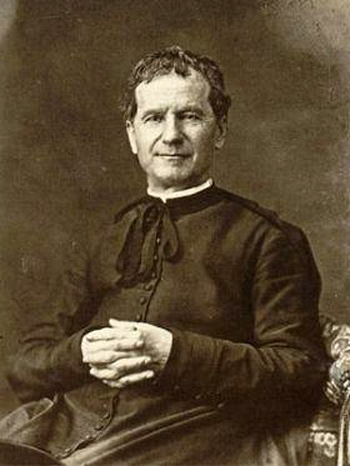 This sharpness of vision is accompanied by another peculiarity: a reciprocal attraction that quickly unites them in an intimate convivium, despite the many circumstances that may separate them, such as differences in country, age, etc. It is easy to see how persons who come together like this naturally gives rise to a group and even a current, which functions like a tumor that distils its poison.
This sharpness of vision is accompanied by another peculiarity: a reciprocal attraction that quickly unites them in an intimate convivium, despite the many circumstances that may separate them, such as differences in country, age, etc. It is easy to see how persons who come together like this naturally gives rise to a group and even a current, which functions like a tumor that distils its poison.
1. The union accentuates the characteristics: In the intimacy of the group, through reciprocal emulation, an ambience is formed that is diametrically opposed to the general ambience in which they find themselves.
2. The accentuation of characteristics engenders hatred: These differences necessarily engender antipathy, friction and hatred for the majority. Such hatred may remain hidden for reasons of convenience, but in some cases (not always) the very need to remain silent will increase its virulence.
3. This hatred encourages fighting: It is an unavoidable consequence. Anyone who finds themselves in a bad environment fights to change it. And, when faced with obstacles, he fights to eliminate them. If these obstacles cannot be passively eliminated, they give way to fighting.
4. The fight leads to proselytism and joint efforts: It is natural that a nucleus of evil people not only attracts its congeners through the force of magnetism, so aptly described by St. John Bosco, but also, due to the tendency to expansion inherent in everything as well as the need to recruit soldiers for the fight, that nucleus will try to increase its number of followers. This joint effort results from a natural demand, which requires no explanation.
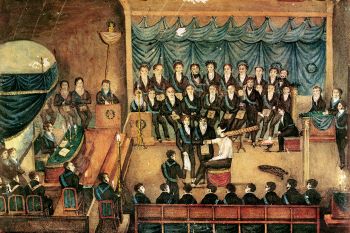 5. When these joint efforts become permanent, an organization results: This also is obvious. Elements permanently linked together by a deep affinity of mentality, the same objectives and a profound joint effort will soon develop an ideological system, plan and methodology of common action, and will form a governing body.
5. When these joint efforts become permanent, an organization results: This also is obvious. Elements permanently linked together by a deep affinity of mentality, the same objectives and a profound joint effort will soon develop an ideological system, plan and methodology of common action, and will form a governing body.
At that moment the path is etched, which goes from the simple fact of the existence of some “bad guys” who recognize each other and come into contact, to the formation of an association. Be it hidden like Freemasonry, semi-hidden like Jansenism or Modernism, or open like Lutheranism or Communism, this association proposes to fight on all terrains – ideological, artistic, political, social, economic, etc. – to achieve its objectives. In a word, it makes a revolution.
Hatred of the good
The driving force behind this whole succession of phenomena is hatred of the good, engendered by perversion when it reaches a certain level of profundity.
I insist on this assertion. I know that when perversion reaches such a profundity, it awakens that mysterious capacity for mutual detection and attraction, which St. John Bosco describes, and which constitutes the initial starting point of every organized revolution.
A large number of people sympathize with the good; If they commit a sin, they do so with shame and sadness. From people like this, as long as morals do not fall too much, there is no need to fear a conspiracy. In others, the perversion so deeply attacks humility that it causes a cynical indifference towards sin, and even a rebellion against good and the good.
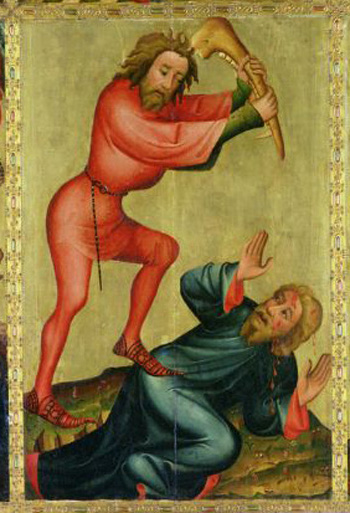 It should not be said that the rational being is incapable of hating the good. Let us remember in passing that if this were true, the evil angels would not have hated God, who is the Supreme Good. However, such aversion may simply consist of an antipathy. This can engender misunderstandings, frictions and incidents without giving rise to a conspiracy or a fight. But there are also cases that demonstrate a much more aggressive state of spirit: A characteristic example of this would be Cain's hatred of Abel. And even more so, the hatred of the Sanhedrin against Our Lord.
It should not be said that the rational being is incapable of hating the good. Let us remember in passing that if this were true, the evil angels would not have hated God, who is the Supreme Good. However, such aversion may simply consist of an antipathy. This can engender misunderstandings, frictions and incidents without giving rise to a conspiracy or a fight. But there are also cases that demonstrate a much more aggressive state of spirit: A characteristic example of this would be Cain's hatred of Abel. And even more so, the hatred of the Sanhedrin against Our Lord.
Let us go to a contemporary example. I recall a news story I read recently about a group of girls who attacked a young classmate, leaving her in a deplorable physical state. When questioned by the police, the delinquents declared that they had no personal grievance against the victim. The only reason for their aggressive action was that this classmate was so exemplary in her studies, behavior and dress that the mere fact of her existence became unbearable for the attackers.
If we imagine this state of mind not in unthinking school children, but in balanced, thoughtful and tenacious persons, we will have uncovered what can give rise to a powerful and dangerous association that could bring about the end of a historical era.
Almost all these considerations are well known, at least when analyzed individually. But generally speaking they appear as confused and isolated cases to most persons.. When exposed and laid out in a body of doctrines and observations, pointing out the common and united features, we glimpse something new. Let us examine what this something actually is.
The sympathy & connivance of the moderates
From what we have seen so far, two aspects of evil were exposed. One engenders Revolution; the other, in the presence of the phenomenon of Revolution, supports that action albeit it in a lesser way.
By the same principle of attraction of evil to evil – simile simili gaudet (the similar enjoys the similar) – which is the profound explanation of the phenomenon so acutely observed by St. John Bosco, it can be inferred that the more subtle evil is attracted, hypnotized and dominated by the more intense evil. This explains why the moderate currents of the Revolution never fight seriously and enduringly against the extreme currents.
 In face of the Revolution, the Girondins in the 18th century; the supporters of the English parliamentary monarchy in the 19th century; the supporters of Kerensky in the 20th century, always ended by ceding to radical currents, even when they fought with weapons in hand against them and temporarily defeated them. Thus, the French bourgeoisie defeated the Paris commune, and to all appearance raised a dam against the Revolution. But, having taken power, this same bourgeoisie favored the development of the revolutionary process. What is more, placed before the Revolution and the Counter-Revolution, the moderate revolutionaries fluctuate, generally coming up with absurd compromises. But ultimately they systematically favor the Revolution against the Counter-Revolution.
In face of the Revolution, the Girondins in the 18th century; the supporters of the English parliamentary monarchy in the 19th century; the supporters of Kerensky in the 20th century, always ended by ceding to radical currents, even when they fought with weapons in hand against them and temporarily defeated them. Thus, the French bourgeoisie defeated the Paris commune, and to all appearance raised a dam against the Revolution. But, having taken power, this same bourgeoisie favored the development of the revolutionary process. What is more, placed before the Revolution and the Counter-Revolution, the moderate revolutionaries fluctuate, generally coming up with absurd compromises. But ultimately they systematically favor the Revolution against the Counter-Revolution.
How can this be explained, when so often the highest and most obvious economic interests, the most honorable distinctions, the most profound traditional formation, the most immediate and tender motives of kinship and friendship, should have led the “moderates” to ally themselves with the Counter-Revolution? How many men of talent were there in the ranks of the “moderates” who had all the intellectual resources to see that their perpetual capitulations were dragging them and their descendants into the abyss, and yet they systematically gave in, as if fatally fascinated by this abyss?
Answering this question is to explain the most essential cause of the systematic victories of the extremists in revolutionary processes, since they are always – or almost always – few in number, not very bright and lacking financial resources. Their victories, in most cases, were due to the timidity, blindness, weakness and resignation of the “moderates,” who were generally rich, influential, numerous and invariably at their disposal, preferring anything rather than to seriously support the hosts of the Counter-Revolution, in general also few in number, poor, etc.
Without a doubt, inertia and fear are characteristics of the wealthy classes, and they partially explain this phenomenon. They do not, however, explain everything. For one thing, not all wealthy classes are hesitant and fearful. For example, the European nobility did not suffer from this defect during the Crusades and the Reconquista. Rather, it is the decadent elites who suffer from this illness.
Antipathy towards the Counter-Revolution
But the fear of the decadent elites does also not explain everything. It is clear that, while on the one hand they have fear of revolutionary extremism, at the same time they express fleeting and involuntary ideas of sympathy with the revolutionary extremism. On the other hand, in relation to counter-revolutionary radicalism they do not manifest fear, but rather a systematic and poorly veiled antipathy. This sympathy and antipathy, so stable and impulsive, necessarily plays a role that should not be underestimated when considering the attitude of the “moderate” revolutionaries.
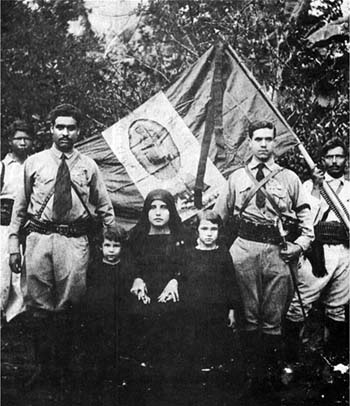 How can this sympathy be explained? What is its cause? The “moderates,” apparently so attached to money, health and the pleasures of the revolutionary spirit, only fear some few contagions. Are they, in this case, self-sacrificing "idealists" – in the bad sense of the word, of course? To all appearances, no. But the facts, carefully observed, show that in a certain way they are, and that this "idealism" plays a profound role in their psychology and actions. In what way?
How can this sympathy be explained? What is its cause? The “moderates,” apparently so attached to money, health and the pleasures of the revolutionary spirit, only fear some few contagions. Are they, in this case, self-sacrificing "idealists" – in the bad sense of the word, of course? To all appearances, no. But the facts, carefully observed, show that in a certain way they are, and that this "idealism" plays a profound role in their psychology and actions. In what way?
The revolutionary spirit constitutes a grave doctrinal and moral deformation, even if it coexists in many cases with uncontaminated customs and indisputable probity in business. In the Encyclical Pascendi, St. Pius X noted this point with regard to the modernists.
Whoever has this spirit, even if it is only by participation, is incorporated into the mysterious dynamics of evil, described by St. John Bosco. Even if the revolutionary spirit in its moderate form does not raise that capacity for mutual knowledge and dynamic articulation, it produces an analogous but weaker phenomenon. This phenomenon is a deep antipathy, albeit discreet and subtle, against everything that opposes the Revolution.
This antipathy causes the moderate to discern, reject and even become hostile to any manifestation of the counter-revolutionary spirit. That is why he passively accepts the sacrifice of his own interests for the sake of the Revolution, and perhaps even finds consolation in it, for the simple reason that his deep antipathy towards the Counter-Revolution is satisfied by the progress of the Revolution.
This fact is astonishing. It would be difficult to believe it if it were not so blatantly apparent throughout the world. How many aristocratic or bourgeois groups that were destroyed and expelled by the Revolution refuse to make any fight and live resignedly, almost happily, in an obscure and almost proletarian situation, perfectly integrated into the revolutionary world of which they were the victims.
Writing this, I think of numerous Russian exiles, and more particularly of so many schismatic clergy, who care about nothing but some compromise with Communism. Despondency? In part, yes. But a despondency without rancor, almost joyful, in which one clearly sees the smile of a secret, perhaps even subconscious, sympathy with that Revolution. Hence it becomes clear that it is not personal interests that direct History, and that History is not primarily a conflict of interests, but of principles, a struggle between truth and error, between good and evil, between light and darkness.
The role of the Devil
What is the role of the Devil in this fight? Or, at least, what is his action in the phenomenon described by St John Bosco?
In the text cited, the Saint clearly admits the preternatural action as plausible, For our part, we are convinced that this action is immense. But this aspect of the problem is not part of the theme of this article, in which we wanted to briefly sketch the psychological contours of the natural order, which operates of itself, but over which the Devil can have influence and act with frequency and terrible efficacy in order to make men the instruments and victims of the Revolution, of which the Devil was the first instigator and continues to be the principal factor.

I will only say one thing about the bad boys, which may seem unlikely but which happens exactly the way I am going to describe it.

One bad boy will always find the other,
says St. John Bosco
Well, despite all this, on the second day or maybe within a few hours after his arrival, you will see them both together during recess. It seems that a malefic spirit enables one to discover the other who is affected by the same vice, as if a diabolic magnet had attracted them in order to form an intimate friendship. The saying "birds of a feather flock together" is an easy way to detect mangy sheep before they become rapacious wolves. (Biography SDB – BAC, Madrid, 1955, pp. 457-)
The testimony of such a truthful, experienced and competent observer in pedagogical matters cannot be doubted.
This testimony presents a fact that is not difficult to observe, even among adults, both in routine episodes of everyday life and in major historical events. When evil reaches a certain level of depth in souls, those persons are endowed with a sharpness of vision that allows them, through signs that might seem insignificant to others, to recognize those of like mind from afar.

St John Bosco, a shrewd observer of the youth he dedicated his life to form
1. The union accentuates the characteristics: In the intimacy of the group, through reciprocal emulation, an ambience is formed that is diametrically opposed to the general ambience in which they find themselves.
2. The accentuation of characteristics engenders hatred: These differences necessarily engender antipathy, friction and hatred for the majority. Such hatred may remain hidden for reasons of convenience, but in some cases (not always) the very need to remain silent will increase its virulence.
3. This hatred encourages fighting: It is an unavoidable consequence. Anyone who finds themselves in a bad environment fights to change it. And, when faced with obstacles, he fights to eliminate them. If these obstacles cannot be passively eliminated, they give way to fighting.
4. The fight leads to proselytism and joint efforts: It is natural that a nucleus of evil people not only attracts its congeners through the force of magnetism, so aptly described by St. John Bosco, but also, due to the tendency to expansion inherent in everything as well as the need to recruit soldiers for the fight, that nucleus will try to increase its number of followers. This joint effort results from a natural demand, which requires no explanation.

Initiation ceremony of a Freemason with its hidden program to destroy the Catholic order
At that moment the path is etched, which goes from the simple fact of the existence of some “bad guys” who recognize each other and come into contact, to the formation of an association. Be it hidden like Freemasonry, semi-hidden like Jansenism or Modernism, or open like Lutheranism or Communism, this association proposes to fight on all terrains – ideological, artistic, political, social, economic, etc. – to achieve its objectives. In a word, it makes a revolution.
Hatred of the good
The driving force behind this whole succession of phenomena is hatred of the good, engendered by perversion when it reaches a certain level of profundity.
I insist on this assertion. I know that when perversion reaches such a profundity, it awakens that mysterious capacity for mutual detection and attraction, which St. John Bosco describes, and which constitutes the initial starting point of every organized revolution.
A large number of people sympathize with the good; If they commit a sin, they do so with shame and sadness. From people like this, as long as morals do not fall too much, there is no need to fear a conspiracy. In others, the perversion so deeply attacks humility that it causes a cynical indifference towards sin, and even a rebellion against good and the good.

Sadly man is fully capable of hating the good: Cain killed Abel because he was jealous of his goodness
Let us go to a contemporary example. I recall a news story I read recently about a group of girls who attacked a young classmate, leaving her in a deplorable physical state. When questioned by the police, the delinquents declared that they had no personal grievance against the victim. The only reason for their aggressive action was that this classmate was so exemplary in her studies, behavior and dress that the mere fact of her existence became unbearable for the attackers.
If we imagine this state of mind not in unthinking school children, but in balanced, thoughtful and tenacious persons, we will have uncovered what can give rise to a powerful and dangerous association that could bring about the end of a historical era.
Almost all these considerations are well known, at least when analyzed individually. But generally speaking they appear as confused and isolated cases to most persons.. When exposed and laid out in a body of doctrines and observations, pointing out the common and united features, we glimpse something new. Let us examine what this something actually is.
The sympathy & connivance of the moderates
From what we have seen so far, two aspects of evil were exposed. One engenders Revolution; the other, in the presence of the phenomenon of Revolution, supports that action albeit it in a lesser way.
By the same principle of attraction of evil to evil – simile simili gaudet (the similar enjoys the similar) – which is the profound explanation of the phenomenon so acutely observed by St. John Bosco, it can be inferred that the more subtle evil is attracted, hypnotized and dominated by the more intense evil. This explains why the moderate currents of the Revolution never fight seriously and enduringly against the extreme currents.

The moderate Girondins, who should have helped the Counter-Revolution, are sent to the guillotine by the radical Jacobin faction they assisted
How can this be explained, when so often the highest and most obvious economic interests, the most honorable distinctions, the most profound traditional formation, the most immediate and tender motives of kinship and friendship, should have led the “moderates” to ally themselves with the Counter-Revolution? How many men of talent were there in the ranks of the “moderates” who had all the intellectual resources to see that their perpetual capitulations were dragging them and their descendants into the abyss, and yet they systematically gave in, as if fatally fascinated by this abyss?
Answering this question is to explain the most essential cause of the systematic victories of the extremists in revolutionary processes, since they are always – or almost always – few in number, not very bright and lacking financial resources. Their victories, in most cases, were due to the timidity, blindness, weakness and resignation of the “moderates,” who were generally rich, influential, numerous and invariably at their disposal, preferring anything rather than to seriously support the hosts of the Counter-Revolution, in general also few in number, poor, etc.
Without a doubt, inertia and fear are characteristics of the wealthy classes, and they partially explain this phenomenon. They do not, however, explain everything. For one thing, not all wealthy classes are hesitant and fearful. For example, the European nobility did not suffer from this defect during the Crusades and the Reconquista. Rather, it is the decadent elites who suffer from this illness.
Antipathy towards the Counter-Revolution
But the fear of the decadent elites does also not explain everything. It is clear that, while on the one hand they have fear of revolutionary extremism, at the same time they express fleeting and involuntary ideas of sympathy with the revolutionary extremism. On the other hand, in relation to counter-revolutionary radicalism they do not manifest fear, but rather a systematic and poorly veiled antipathy. This sympathy and antipathy, so stable and impulsive, necessarily plays a role that should not be underestimated when considering the attitude of the “moderate” revolutionaries.

The Cristeros, an example of the good who provoked the hatred of the bad; below, the martyr Fr. Miguel Pro
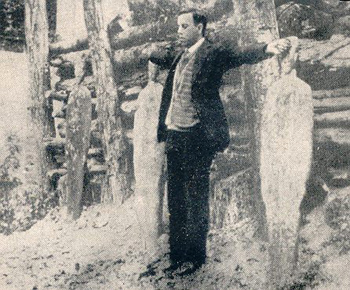
The revolutionary spirit constitutes a grave doctrinal and moral deformation, even if it coexists in many cases with uncontaminated customs and indisputable probity in business. In the Encyclical Pascendi, St. Pius X noted this point with regard to the modernists.
Whoever has this spirit, even if it is only by participation, is incorporated into the mysterious dynamics of evil, described by St. John Bosco. Even if the revolutionary spirit in its moderate form does not raise that capacity for mutual knowledge and dynamic articulation, it produces an analogous but weaker phenomenon. This phenomenon is a deep antipathy, albeit discreet and subtle, against everything that opposes the Revolution.
This antipathy causes the moderate to discern, reject and even become hostile to any manifestation of the counter-revolutionary spirit. That is why he passively accepts the sacrifice of his own interests for the sake of the Revolution, and perhaps even finds consolation in it, for the simple reason that his deep antipathy towards the Counter-Revolution is satisfied by the progress of the Revolution.
This fact is astonishing. It would be difficult to believe it if it were not so blatantly apparent throughout the world. How many aristocratic or bourgeois groups that were destroyed and expelled by the Revolution refuse to make any fight and live resignedly, almost happily, in an obscure and almost proletarian situation, perfectly integrated into the revolutionary world of which they were the victims.
Writing this, I think of numerous Russian exiles, and more particularly of so many schismatic clergy, who care about nothing but some compromise with Communism. Despondency? In part, yes. But a despondency without rancor, almost joyful, in which one clearly sees the smile of a secret, perhaps even subconscious, sympathy with that Revolution. Hence it becomes clear that it is not personal interests that direct History, and that History is not primarily a conflict of interests, but of principles, a struggle between truth and error, between good and evil, between light and darkness.
The role of the Devil
What is the role of the Devil in this fight? Or, at least, what is his action in the phenomenon described by St John Bosco?
In the text cited, the Saint clearly admits the preternatural action as plausible, For our part, we are convinced that this action is immense. But this aspect of the problem is not part of the theme of this article, in which we wanted to briefly sketch the psychological contours of the natural order, which operates of itself, but over which the Devil can have influence and act with frequency and terrible efficacy in order to make men the instruments and victims of the Revolution, of which the Devil was the first instigator and continues to be the principal factor.
Posted January 27, 2025

______________________
______________________
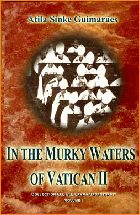 Volume I |
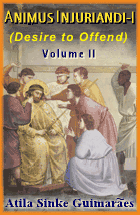 Volume II |
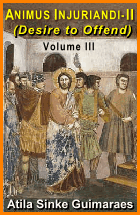 Volume III |
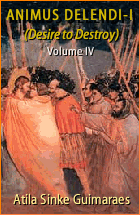 Volume IV |
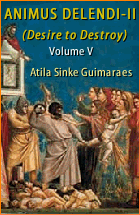 Volume V |
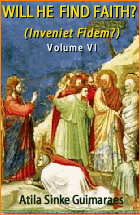 Volume VI |
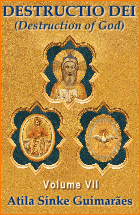 Volume VII |
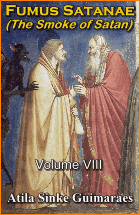 Volume VIII |
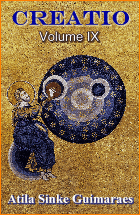 Volume IX |
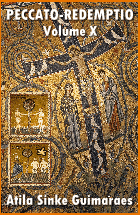 Volume X |
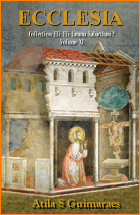 Volume XI |
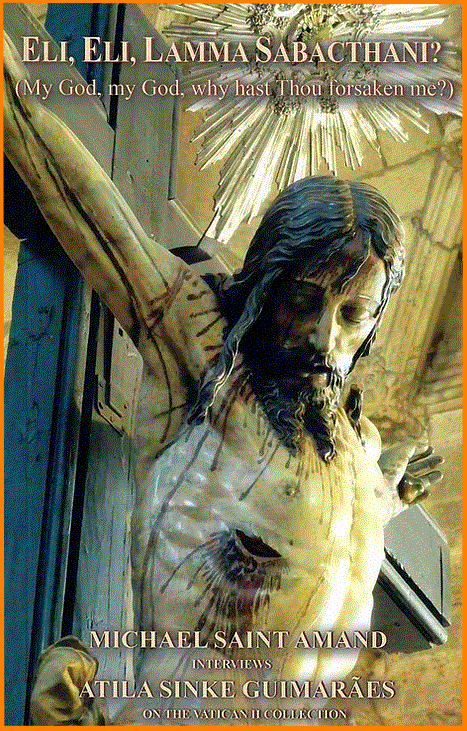 Special Edition |


